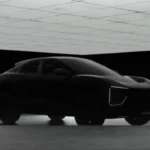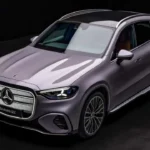Key Highlights:
In July 2024, retail sales of electric cars and SUVs exceeded 7,500 units for the third consecutive month. While the 7,517 units sold represented a 3 percent decline compared to the same period last year (7,768 units in July 2023), they marked a 4 percent increase from the previous month (7,211 units in June 2024).

On a cumulative basis for the first seven months of CY2024, sales reached 56,207 units, indicating a 21 percent year-over-year increase compared to the same period in 2023 (46,523 units). These sales already make up 68 percent of CY2023’s total sales of 82,546 units. This retail sales data is sourced from the government of India’s Vahan website as of August 1.
Tata Motors
In July 2024, Tata Motors, the leading EV market player, sold 4,752 units, reflecting a 13% decline from the previous year. This decline is due to increased competition in the market. Tata Motors’ market share decreased to 63% in July 2024 from 70% in July 2023. Their retail sales from January to July 2024 increased by 7.57% compared to the same period in 2023, amounting to 37,842 units. Tata Motors has achieved 63% of its total sales target of 60,053 units.
MG Motor India
MG had its best monthly performance in July, selling 1,520 units of the ZS EV and Comet EV and capturing a 20% market share. This is an improvement over its 16% share in July 2023. The company is expanding its sales network to Tier 3 and Tier 4 cities as well as rural markets. Additionally, MG is preparing to launch its third EV, the Windsor, a rebranded Wuling Cloud EV from Indonesia, expected in late August or early September.
Mahindra
Mahindra sold 485 units of XUV400 in July 2024, marking a 27 percent increase from the previous month. This gives them a 6.45 percent EV market share for the month. Since January 2024, Mahindra has sold 4,325 units, reflecting a 117 percent year-over-year increase. The company plans to invest Rs 12,000 crore towards its EV programme and add manufacturing capacity for around 1,00,000 units by end-March 2025. Additionally, Mahindra has announced 4-5 new models on the INGLO platform that will utilize key components from the Volkswagen Group.
BYD, Citroen and Hyundai sales trend
In July, BYD sold 342 units (4.54 percent market share) and in the January-July 2024 period, they sold 1,368 units, their best monthly sales so far. They have surpassed Hyundai’s sales since April for four straight months.
Citroen sold 155 units of the eC3 in July, a 35 percent decrease from June, but they are experiencing growing demand from EV fleet operators, with orders for over 7,000 units placed between March and July.
Hyundai discontinued the Kona in India and sold 55 Ioniq 5 EVs in July. Their retail sales for the first seven months of 2024 total 753 units, up 5 percent from the same period in 2023.

Also Read: Tata Curvv to Debut with a New Key Fob: A Premium Upgrade
Luxury Electric Car Sales
In July 2024, there was a slow demand for luxury electric cars, with a combined retail sales of 165 units, down 14.50% compared to July 2023. However, sales for the first seven months of 2024 increased by 28%, totaling 1,525 units compared to 1,191 units in the same period in 2023.
BMW India led the luxury EV market in both July 2024 with 70 units and in the January-July 2024 period with 615 units. Although July sales were down 34% compared to July 2023, the cumulative seven-month sales showed a 4% increase year-over-year.
Mercedes-Benz India sold 30 units in July 2024, a decrease from July 2023, but their January-July 2024 sales increased by 85% year-over-year to 435 units.
Volvo Auto India saw 40 EVs sold in July 2024, an increase from July 2023, and its cumulative seven-month sales showed a 13% improvement over the previous year.
Audi India sold 17 EVs in July 2024, compared to nine in July 2023, and their first seven-month sales for 2024 were up 90% year-over-year to 99 units.
ELCTRIK Speaks
In conclusion, the electric vehicle market in India is showing promising growth overall, with some manufacturers experiencing declines in sales while others are seeing significant increases. It’s clear that the competition is heating up, driving companies to innovate and expand their offerings. As we move forward, it will be interesting to see how market dynamics continue to evolve and how different manufacturers adapt to the changing landscape.






